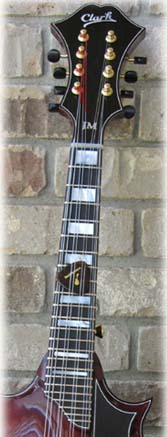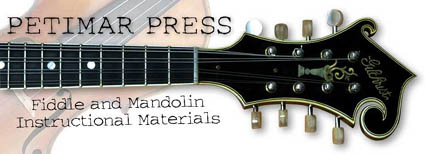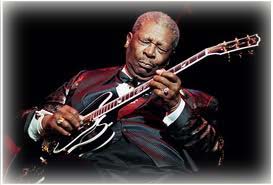« October 2010 |
Main
| December 2010 »
 November 25, 2010 | Art imitates life; Impressionist Painters and Jazz Music
November 25, 2010 | Art imitates life; Impressionist Painters and Jazz Music
Art imitates life. A fascinating perspective on the history of music is to examine how technical innovation, social and cultural changes, and economic challenges shape and impact its development. The austerity of the Middle Ages is apparent in the stark harmonies of Gregorian chants and less dense Medieval music. The advancement of the sciences is mirrored in the calculated, math-like complexities of the Baroque and Classical era. The social upheaval and grumblings of the Bourgeoisie are stomped out in sounds of the Romantic era, and the threats of nuclear destruction manifests itself in the uncertainty and tensions of modern 20th century stylings.
An interesting retrospective is the parallel of the Impressionist era art and its not-so coincidental comparison to the evolution of jazz. The way the culture thinks is always expressed in its arts. Music, architecture, and visual arts are all impacted in the same way with its contemporary history. We recently came across an intriguing article by Jay Lewallen exploring this phenomenon, "Impressionist Painters and Jazz Music."
He quotes The Concise Oxford Dictionary of Music on the definition of impressionism. "Term used in graphic art from 1874 to describe the work of Monet, Degas, Whistler, Renoir, etc., whose paintings avoid sharp contours but convey an 'impression' of the scene painted by means of blurred outlines and minute small detail. It was applied by musicians to the music of Debussy and his imitators because they interpret their subjects (e.g. La Mer) in a similar impressionistic manner, conveying the moods and emotions aroused by the subject rather than a detailed tone-picture. To describe Debussy's harmony and orchestration as impressionist in the sense of vague or ill-defined is to do them a severe injustice. Some of the technical features of musical impressionism included new chord combinations, often ambiguous as to tonality, chords of the 9th, 11th, and 13th being used instead of triads and chords of the 7th; appoggiaturas used as part of the chord, with full chord included; parallel movement in a group of chords of triads, 7ths, and 9ths, etc.; whole-tone chords; exotic scales; use of the modes; and extreme chromaticism."
Jazz grabs individual harmonic "intentions" and paints their pictures in broad strokes. We step away from a performance, and we aren't as moored to the specific detail, any more than we are a more realistic, photo-like painting. We get "hints" at harmonic progressions, outlined by melodic interpretation of the vertical/chord structure of the song. Take a look at a Van Gogh painting and you'll see this. Mood, emotion, intent, but little in specifics. Non-jazzers have always objected to the genre's deviation from known melody. It's a completely different mindset, but one all to familiar to the Impressionist and Post-Impressionist painter.
Take some time to read this article: Impressionist Painters and Jazz Music
s
Further:
Compose yourself. Story Arcs
Moving Forward; Melodic Progression
Jazz is an accident.
http://jazzmando.com/mandolin_chord_economics.shtml
Posted by Ted at 5:59 AM
 November 18, 2010 | Closing it up
November 18, 2010 | Closing it up
 We invest a lot energies here discussing the benefits of learning closed position fingering. The approach is quite practical, and benefits almost immediate. Better advantages increase exponential over time too, as you become more fluent and move up the neck. We invest a lot energies here discussing the benefits of learning closed position fingering. The approach is quite practical, and benefits almost immediate. Better advantages increase exponential over time too, as you become more fluent and move up the neck.
Resistance by many may be because of the extra use of the pinky finger, and some frankly don't understand why being able to play in Ab or Eb is somehow relevant to their particular music genre tastes, but a reliance on open strings can be limiting to most, and crippling to some. What the FFcP system does is develop recognizable patterns of one and two fret intervals. In the case of the Major Scale, you have a two fret, two fret, one fret pattern of skips that conveniently repeats itself on the next string. That's the 1st FFcP in a nutshell, based on starting with the first finger. Learning the other three patterns, 2nd FFcP, 3rd FFcP, and 4th FFcP, starting on the respective fingers is a scheme of organizing the similar one fret/two fret patterns in an intuitive and tactile way. Once these are established, you have incredible liberty and movability at your literal fingertips.
Do we ignore the open strings?
Yes, but only temporarily, and just in the early orientation stage. The goal is to add the closed finger approach to your arsenal of mandolin tools, not to replace it. Sure that open A string is handy to fall back on, but if you never fret the A note on the 7th fret of the D string, you're never uncovering the instruments verdant potential in the upper register, or the ergonomic fingerings of moving into 3rd, 5th or 7th position. The FFcP pattern drills are the calisthenics that allow you to play the game.
If you haven't already, check out the first lesson on our FFcP index page. If you have been exposed to it, explore some of the other more advanced versions, including Dorian/Minor, Pentatonic, and 7th chord arpeggios.
Your playing will never be the same.
Further:
Paths to fretboard mastery
"The notes seem to come from out of nowhere."
Let's review. Why Closed Fingerings again?
Math, eggs, and mandolins; higher level understanding
Closed Fingerings
Posted by Ted at 12:29 PM
 November 11, 2010 | Pete Martin: Bebop Mandolin; Target Notes and Chromatic Approaches
November 11, 2010 | Pete Martin: Bebop Mandolin; Target Notes and Chromatic Approaches
New from the brilliant mind of Pacific northwest multi-instrumentalist and mandolin theory pedagogue Pete Martin, "Bebop Mandolin: Target Notes and Chromatic Approaches." We mentioned his splendid Jazz Chording for Mandolin" book recently, and are pleased to see him cover in quite exhaustive detail, linear concepts that can help you construct more effective melodies in soloing.
Pete introduces the strategies, "Any strong melody, composed or improvised, needs good structure and a look to what is happening next. It is also important in music to have places we look forward to going. The act of moving toward these places gives the music more logic to the players and the listeners. It keeps interest by hearing how the music gets that point, then moves to the next of these points in time progressively. In a melody or improvised solo, there needs to be notes that connect that melody to the chords being played. This helps bond the melody and chords together in a logical way that sounds pleasing to most listeners."
His 153 page dissertation not only covers these concepts, but introduces through examples and transposable exercises how to implement them on the mandolin fretboard. He starts with Target Notes: Thirds, Sevenths, Alterations and Others, developing the notion of "meat" tones in the harmonic structure of the music. To get to them, the next step is Approach Notes: Diatonic, Chromatic, How To Practice Targets and Chromatic Approaches. Outlining specific examples, including material by Charlie Parker, Clifford Brown, and other players, you get the opportunity to see and hear on your own fingerboard the way these ideas work in the real world, and of course, develop your own fertile ground of melodic construction.

Pete takes a different approach to marketing his materials than the traditional publishing route. Through a sort of "honors system," you actually download the book in a PDF format online, have the chance to thoroughly peruse his lessons, and then pay for it if you use it. Especially in the newly ordained era of eBooks and online resources, this is an effective way to get materials, and the $10 cost is one of the best bargains you'll find in getting a grip on these ideas.
Highly recommended!

Download book:  Bebop Mandolin: Target Notes and Chromatic Approaches Bebop Mandolin: Target Notes and Chromatic Approaches
Other books available online: Petimar Press
Further:
Moving Forward; Melodic Progression
Axis of the 3rd & 7ths
More fretboard geometry--Maj7 arpeggios
Some Minor issues: Seeking Resolutions
Posted by Ted at 8:27 AM
 November 4, 2010 | Dirty it up
November 4, 2010 | Dirty it up

If we are serious about performing well, we work a lot on the fundamentals of playing. Just as in sports, it's the fundamentals that allow us to perform the athletics and express our music more effectively, yet in the pursuit of effective execution, we can't forget that great technique is a means to an end, and not the end. It's often the bane of classical training, the musician who can play notes brilliantly, but not play the "music."
Listen to some classical musicians attempt jazz. They can sound stiff and unconvincing, despite playing all the notes cleanly and correctly. There's still something missing, and we suggest it's because of an unbending focus on execution rather than aesthetic. Not to condone sloppy playing, but once in a while a player needs to work from a solid skill base, and "dirty it up." Four elements to consider:
Rhythmic control. We learn to play in time. We have to do that, especially when playing in an ensemble setting. A good metronomic sense is crucial to cooperate with others in a group, and you need a good sense of rhythm to keep it consistent. The problem is in jazz (and bluegrass), you're missing the "swing." Notes aren't evenly divided into duples and triplets, there's a subconscious and grey area of timing that yields an aesthetic tension and energy, when subdivisions aren't clean. Things sound too "white."
Articulation. Good pick control is an inarguably important skill. Playing with a clear pick stroke is crucial to pushing tone and a strong fretting finger is the only way you can maximize sustain. That said, we still have tricks at our disposal, slides, hammer-ons, pull-offs, mutes, and harmonics. It's these more subtle ingredients that give our music character and individual identity. Pick and fret cleanly, but don't think every note has to be started by a pick. Don't be afraid to glissando into a note, or prior to its release.
Dynamics. Variations in volume are routinely overlooked by the best of players. We have to have more than two dynamics, loud and off. Playing quietly makes the louds louder. Fortissimo is great for statement and drama, but the ear tires quickly, and we need the contrast. Subtle changes in picking including grip, angle, and pick contact can also lend character to a passage. Silence can be a terrific weapon.
Phrase consistency. Thinking where our musical sentences start and stop is important, but we need to go the next step and build within these "story arcs" the sense of action. We start soft, build, climax, and get soft again. Introduction, tension, resolution. Tell a tale, communicate an aesthetic narrative within the string of notes, or that's all you have. A string of notes.
We don't want to undermine the importance of good technique. You really can't embrace the subtleties we mentioned without a strong physical command of your instrument. Scales and arpeggios are crucial to developing these abilities, and unintended sloppiness is not pleasant to listen to. Once you have achieved some of the fundamentals, embrace the next step.
Dirty it up.
Further:
It don't mean a thing, if it ain't...
Tremolo. Stirred, not shaken.
Keeping it honest: metronomes
Pick propulsion
Respect the Silence
Posted by Ted at 9:45 AM

Disclaimer: In the 'Information Age' of the 21st Century,
any fool with a computer, a modem, and an idea can
become a self-professed 'expert." This site does not
come equipped with 'discernment.'
|



